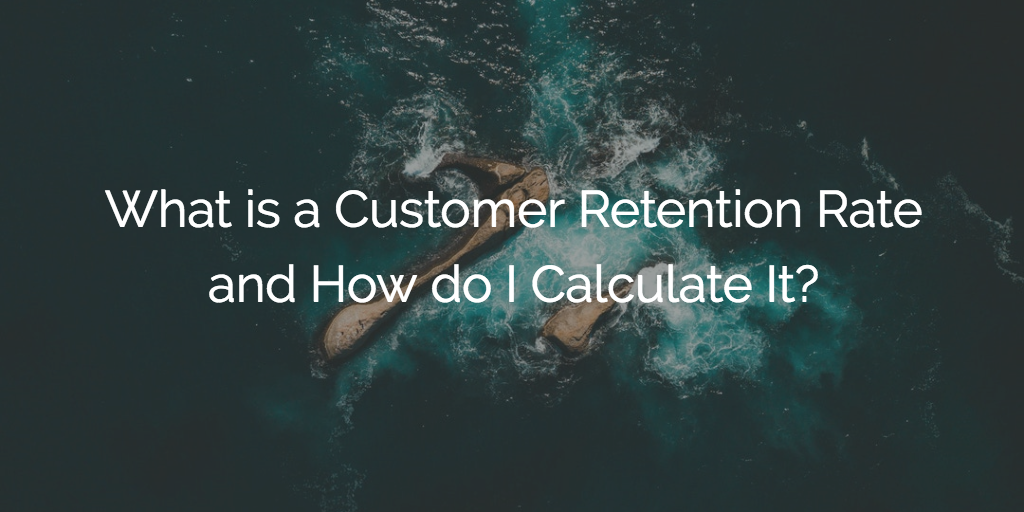Customer retention describes the actions and strategies used to prevent customers from taking their money elsewhere. When a customer defects, it’s known as churn. Customer retention efforts, when done successfully, will prevent churn and encourage repeat customers.
Keeping customers happy is nothing new, but it’s taken on greater importance ever since a little something we call the SaaS industry came about. Churn is devastating for recurring revenue businesses of all kinds—a silent killer. If you’re not proactive, your customer base could be eroding even as you book more and more new clients.
Not only does retaining customers keep your revenue growing at a steady pace, but it comes with all sorts of benefits. It’s actually cheaper and easier to expand existing customer accounts. Acquiring a new customer can be anywhere from five to 25 times more expensive than selling to existing customers. It takes a significant chunk of time and money to turn prospects into customers—think of all the people involved and the time it takes to move potential customers along the funnel. It just seems like common sense, right? If you put the same effort into establishing and maintaining a customer retention program, your customers will be worth more in the long run and even add to your bottom line.

*Is anyone else wondering how effective a retention strategy would be if it involved Ryan Gosling begging customers to stay?
Calculating Customer Retention
When it comes to measuring customer retention, you need to know two things: “How much money am I retaining?” and “How many logos am I retaining?” Net Renewal Rate (NRR) and Gross Renewal Rate (GRR) show retention in terms of revenue retained throughout a period of time, while Customer Retention Rate or Logo Retention Rate show retention in terms of number of customers. Measuring both revenue and logo retention will give you the most balanced view of your business health. Our Customer Success Metrics Calculator makes it easy to calculate these metrics (and more), so you have no excuse to leave any out!
Net Renewal Rate (NRR)
Use NRR to see how effective your team is at making money moves. This metric measures the total value of your renewed contracts as well as the revenue gained through upsells and cross-sells.

You can evaluate NRR on a monthly or annual basis, depending on your needs. Once you’ve determined the period of time you want to measure, add the value of your renewed contracts with your expansion revenue and divide it by the total value of all contracts that were up for renewal. Because upsells and cross-sells are taken into account, your NRR can be over 100% and this is what best-in-class companies strive for.
Here’s what you need to calculate NRR:
- The dollar value of contracts up for renewal at the beginning of the period
- Total expansion in dollars of the current time period
- The dollar value of renewed contracts from that current time period
Use our CS Metrics Calculator to get your NRR.
Gross Renewal Rate (GRR)
GRR is NRR’s no-frills twin that could honestly care less about expansion. This metric measures the total value of renewed contracts out of those with the potential to renew. The big differentiator between GRR and NRR is that GRR does not include upsell and cross-sell revenue. It purely measures your success in retaining existing customers over a period of time. It cannot be over 100% but you want it to be as close to that as possible.
Here’s what you need to calculate GRR:
- The dollar value of contracts up for renewal at the beginning of the period
- The dollar value of renewed contracts from that current time period
Use our CS Metrics Calculator to get your GRR.
Customer Retention Rate (aka Logo Retention Rate)
Customer Retention Rate measures customer retention in terms of customers lost, not revenue lost, because it’s not always about the “shmoney” (sorry, Cardi B). It’s often helpful to view retention in terms of logos because just relying on the revenue-focused statistics can cause you to miss weaknesses in your retention strategy. You might be losing a certain type of customer that you wouldn’t be able to identify just using NRR and GRR. Ideally, your customer retention rate should rise over time and get as close to 100% as it can.
Here’s what you need to calculate Customer Retention Rate:
- Number of customers up for renewal (at the beginning of the time period)
- Number of renewed logos (at the end of the period)
Use our CS Metrics Calculator to get your Customer Retention Rate.
Improving Customer Retention with Customer Success
“Customer Success is fundamentally about realizing your customer is not a transaction or deal, but a human being just like you. And, like you, they want to succeed in what they do.” — Nick Mehta
Nowadays, you’re more likely to find someone who doesn’t know who Cardi B is than find someone who doesn’t have Netflix or an Amazon Prime membership. Subscription services are a normal part of life, whether you work in the recurring revenue industry or not. A lot of us pay monthly to listen to music without ads, keep up with the latest shows, and get everything you need in two days or less. You can bet every single service wants you to continue listening, watching, and using for another month—and the next and the next and the next. Subscription businesses need customers to stick around and Customer Success ensures that you keep enjoying their products month after month.
Retention is inextricably linked to the amount of effort you put into delivering positive outcomes and experiences to your customers. This is not the job of just one department—Customer Success is a company-wide mentality that needs to be shared by everyone involved pre- or post-sale. Improving your customer retention strategy is an iterative process that evolves as your company learns and grows. The following are some Customer Success best practices that are necessary components of a customer retention program.
Understand the customer journey
You need to know what your customers are going through if you want to create a strategy that keeps them coming back for more. As more companies adopt a customer-centric mindset, they’re changing the way they model the customer journey. They’re starting with the customer’s experience and desired outcomes and working backward from there. This includes building out a journey and identifying “Moments of Truth”—key interactions that can cost you a renewal if handled badly but yield positive results if mitigated properly. We’ve created a simple framework to help you organize the Customer Journey, can find it here.
Common Reasons Why Customers Churn
Customers can leave for a variety of reasons. Sometimes it’s in your control, sometimes it’s not. No matter what, the best way to mitigate churn risks is to get ahead of them. Customer Success platforms aggregate important customer data to create a health score. This technology will allow you to take on more customers without sacrificing the experience or neglecting their desired outcomes. Customers can churn because:
- The champion for your solution leaves the company
- They did not reach their desired outcomes
- They had Moments of Truth that created friction in their journey
- They weren’t a good fit for your product from the get-go
- They had negative experiences and no way of notifying your team
When it comes to customer retention, sooner is better than later because every new customer is both an opportunity and a risk. Taking on customers without a customer retention program in place is like pouring water into a strainer—the water will eventually drain out.

Developing a customer retention strategy that revolves around the customer’s needs will allow you to proactively keep customers from dripping away. To learn more about Gainsight’s solutions for Customer Success and customer retention, check out our Elements of Customer Success framework that’s based on our work with hundreds of Customer Success implementations.

